Navigating the intricate maze of SEO requires precision and keen observation. SEO tracking isn’t just a trendy phrase—it’s an integral component to optimize your page and website. For those eager to zoom in on their performance, this article offers 17 robust methods to keep tabs on your SEO momentum. Dive into:
- The essence of website performance indicators.
- Strategies for page optimization follow-ups.
- Innovative approaches to gauge SEO gains.

Forget wandering in the digital abyss. Now, it’s about marking each milestone with clarity and confidence. Gear up to pinpoint the metrics that matter and pave the path of success. And remember, enhancing user experience is a pivotal piece of the puzzle. Integrate Plerdy tool to refine your CRO & UX strategy, and experience the difference. ⚡🧨
What is SEO tracking?
SEO tracking breaks down the intricate dance of search engine optimization into quantifiable metrics, allowing businesses to gauge the efficiency of their strategies. Think of it as the digital roadmap — it doesn’t just indicate where you’ve been, but also points out potential avenues to explore.
Dive into the vibrant world of various niches:
- E-commerce: Monitor how product listings rank and adjust content strategies accordingly.
- Blogging: Track keyword rankings to determine which topics resonate with your audience.
- Local Businesses: Observe local search metrics to pull in more foot traffic.
By harnessing the power of SEO tracking, businesses can pin down the specifics. For instance, an online boutique might notice an uptick in organic traffic after revamping product descriptions, while a tech blogger might witness a surge in readership after focusing on emerging trends. In the bustling digital marketplace, it’s about spotting patterns, adapting on the fly, and ensuring your SEO strategies align with your goals.
Modern SEO tracking digs deep, focusing not just on surface metrics like page views but diving into engagement rates, conversion paths, and user behavior. In the dynamic ebb and flow of the digital landscape, staying rooted in real-time data through SEO tracking offers a steadying anchor, enabling brands to navigate with precision and panache. ⚡✅
How To Track SEO?
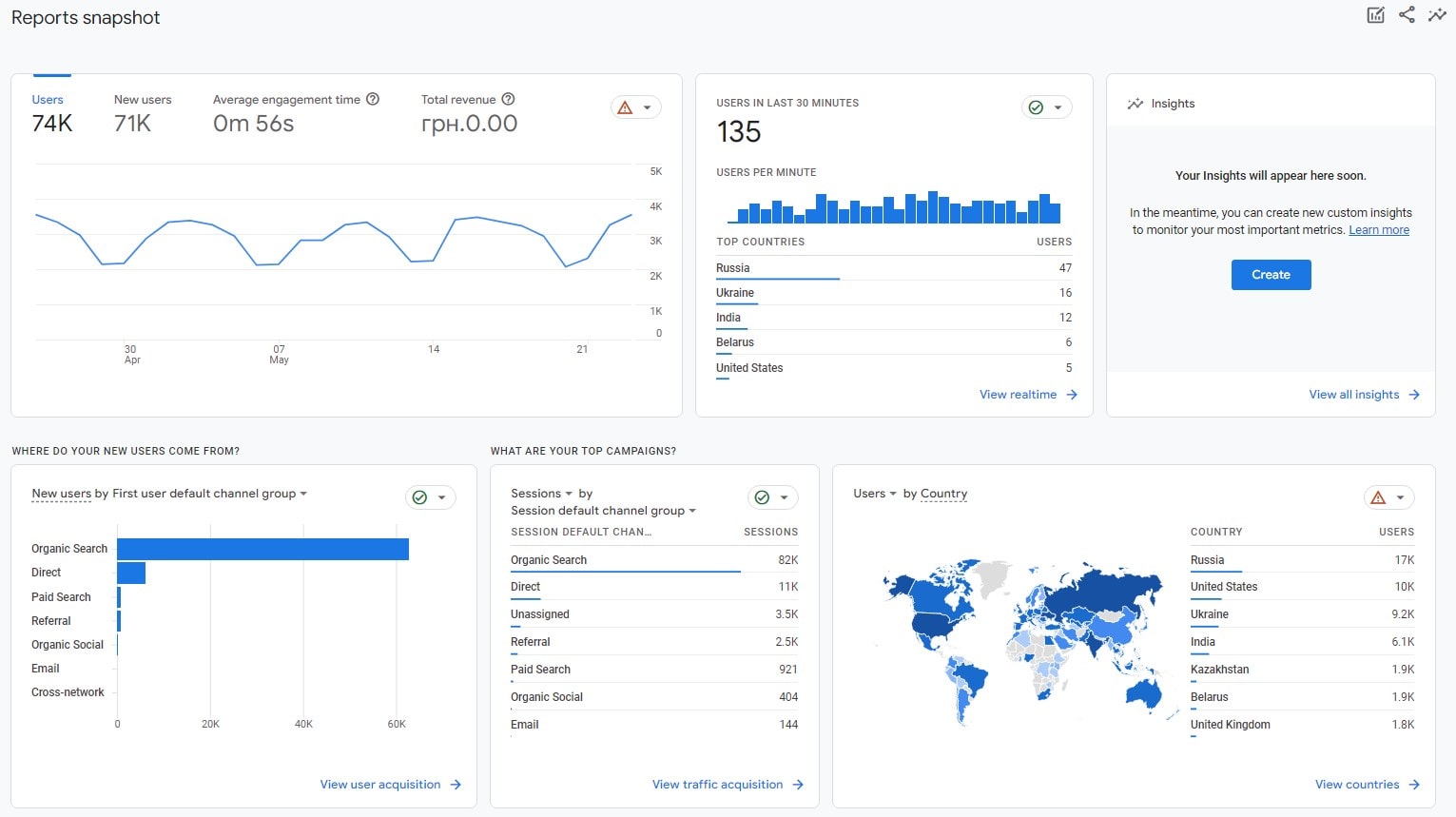
Tracking SEO isn’t just about tallying up numbers; it’s about interpreting data-driven stories to enhance your digital strategies. Diving into the analytics can give you valuable insights, especially when you zoom into specific niches. Let’s roll up our sleeves and delve into the mechanics of SEO tracking:
- Metrics Dashboard: Platforms like Google Analytics provide a goldmine of data – from page views to bounce rates. For a healthcare blog, this could mean focusing on posts about trending health topics.
- Keyword Rank Tools: These are essential for any niche. A local bakery might want to rank for “artisanal breads,” and with these tools, they can gauge where they stand.
- Backlink Analyzers: Let’s say you run a yoga studio. By examining who’s linking to your meditation guides, you can foster relationships and grow your brand’s authority.
- Engagement Rate Calculators: For an e-commerce platform selling handmade jewelry, understanding which products captivate the audience can lead to informed inventory decisions.
By leveraging the right tools and strategies, you can sift through the digital noise, pinpointing what works and pivoting when necessary. Remember, SEO tracking isn’t a one-size-fits-all; it’s tailored, it’s nuanced, and it’s the compass guiding your digital journey. Stay informed, stay adaptable, and let your data light the path. ⚡
Setting Up SEO Goals
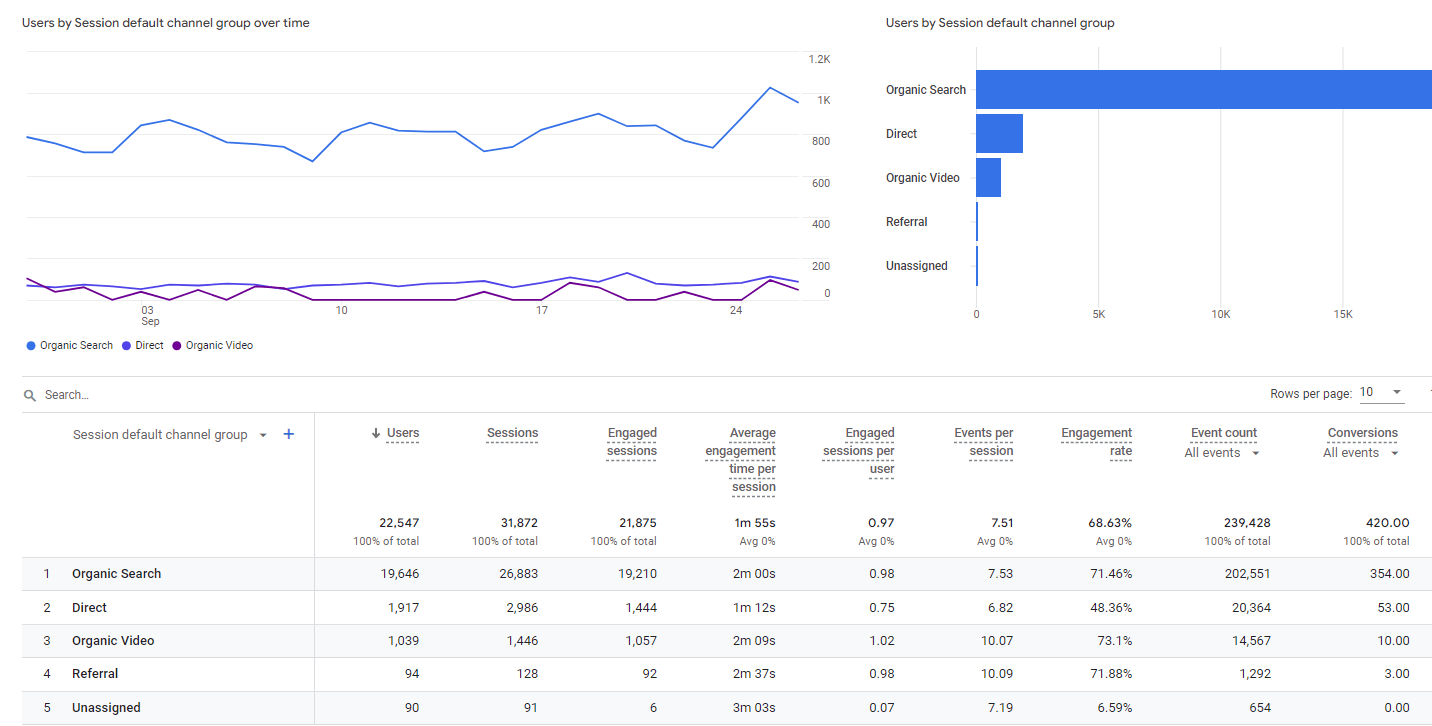
Establishing clear SEO goals is pivotal in navigating the digital landscape. Kick-off by pinning down your primary objectives for website performance. Whether you aim to boost organic traffic, enhance user engagement on specific pages, or improve click-through rates – tracking is your compass. Here’s a quick breakdown to guide you:
- Prioritize Page Metrics: Monitor bounce rates, average session durations, and page views to gauge visitor engagement.
- Set Benchmarks: Use industry-specific data, like an e-commerce site analyzing cart abandonment or a blog targeting average read time, to set your standards.
- Track Regularly: Regularly updating and adjusting your goals ensures your website remains in line with your evolving digital strategy.
By leveraging these steps, you can set a concrete path for your online journey and gauge your progress efficiently.
Define Clear and Measurable Objectives
Setting up SEO is akin to plotting a roadmap for a cross-country trip. You wouldn’t set out without pinpointing destinations – similarly, your website needs clear objectives. Drill down on specific, actionable goals. Here’s how to nail it:
- Laser-focus on KPIs: Whether it’s ramping up page views for a healthcare blog or bolstering e-commerce conversion rates, zero in on your Key Performance Indicators.
- Make It Tangible: Instead of vaguely aiming to “increase traffic”, shoot for a 20% uptick in monthly website visitors.
- Sync With Tracking Tools: Harness tools to gauge the pulse of your page and ensure objectives align with actual metrics.
By embracing clarity and measurable targets, you not only pave the way for tangible results but also streamline your SEO endeavors for ultimate success.
Aligning SEO Goals with Business Objectives
To thrive in the digital landscape, it’s paramount to ensure your SEO goals fall in step with your overarching business aspirations. Drawing this alignment does more than boost your page metrics – it supercharges the entire website’s synergy with your brand’s mission. Consider these strategies:
- Decipher Core Aims: A luxury brand might prioritize showcasing high-quality images to captivate elite clientele, while a tech start-up could emphasize page speed to draw a tech-savvy crowd.
- Break Down the Numbers: Map out desired traffic flow; for example, a travel blog may target 10,000 monthly readers from organic search to enhance affiliate partnership prospects.
- Harmonize with Sales Goals: If a retail website aims to move 200 products a month, SEO should be geared toward enhancing product page visibility and user experience.
Crafting this intertwined strategy is essential for a holistic approach, ensuring every click serves the bigger picture.
Essential Tools for SEO Tracking

Navigating the digital highways requires the right tools in your arsenal. When zeroing in on your website’s SEO performance, certain platforms rise above the rest. Here’s a snapshot:
- Analytics Ace: Google Analytics dives deep into page engagement metrics, invaluable for e-commerce mavens seeking purchase funnel insights.
- Insight Inspector: Google Search Console sheds light on keyword potency, a gem for bloggers hungry for topic relevance.
- Third-party Titans: Tools like SEMrush and Ahrefs offer a bird’s-eye view of your website’s SEO panorama, essential for businesses scaling the competitive ladder.
Arm yourself with these tools, and you’re set to track, tweak, and triumph in your digital endeavors.
Google Analytics and its Role in SEO Tracking
Google Analytics serves as a powerful compass for digital marketers, steering them through the vast oceans of website data. With its insights, brands carve out robust SEO strategies, attuned to their unique digital landscapes. Here’s a snapshot of its prowess:
- Traffic Tidbits: Dive into your audience’s origins – whether they hail from organic search or were lured in by a captivating social media post.
- Behavior Breakdown: Unravel how users interact with your page, from an e-commerce giant assessing cart pathways to a budding blogger examining post popularity.
- Conversion Chronicles: Set up goals and track them, ensuring every tweak aligns with tangible results.
- Site Speed Specs: Pinpoint areas for improvement, ensuring no user bounces due to a snail-paced loading time.
Incorporating Google Analytics’ robust tracking empowers brands to optimize each page, harmonizing SEO efforts with website performance.
Google Search Console Insights
Google Search Console (GSC) stands as a beacon for those navigating the intricate intricacies of SEO. This tool furnishes marketers with tailored data, letting them fine-tune their website strategies. Let’s unearth its capabilities:
- Performance Pulse: Gauge clicks, impressions, and click-through rates – vital stats for a local café aiming to spice up its online menu visibility.
- Site Link Lore: Understand which external domains point back to your page, beneficial for a fitness instructor striving to expand his virtual class reach.
- Keyword Chronicles: Discover which search queries push traffic to your website, perfect for a digital artist wanting to spotlight her portfolio.
- Crawl Critiques: Stay updated on how Google bots interact with your site, pivotal for an online bookstore ensuring its latest titles get indexed.
Leveraging GSC insights means equipping oneself with a magnifying glass, ready to zoom into every SEO facet and elevate a website’s digital footprint.
Other Third-party SEO Tracking Tools
Beyond Google’s domain, a myriad of third-party platforms emerges, each tailored to enrich your SEO endeavors. These tools often supplement and extend the insights provided by the standard offerings. Dive into this compilation:
- SEMrush Symphony: This SEO tracking tool offers competitive analysis, allowing a boutique hotel to size up its digital footprint against local rivals.
- Ahrefs Analysis: Renowned for its backlink database, it’s a treasure for a travel blogger eager to strengthen connections across the web.
- Moz Metrics: With its Domain Authority score, an upcoming indie musician can gauge her website’s clout in the digital soundscape.
- Ubersuggest Insights: With keyword ideas galore, a startup focusing on sustainable fashion can identify trending search terms to weave into their content.
Employing these third-party tools amplifies your SEO tracking capabilities. A comprehensive approach ensures every page performs at its peak, intertwining seamlessly with overarching website goals.
Key Metrics to Monitor
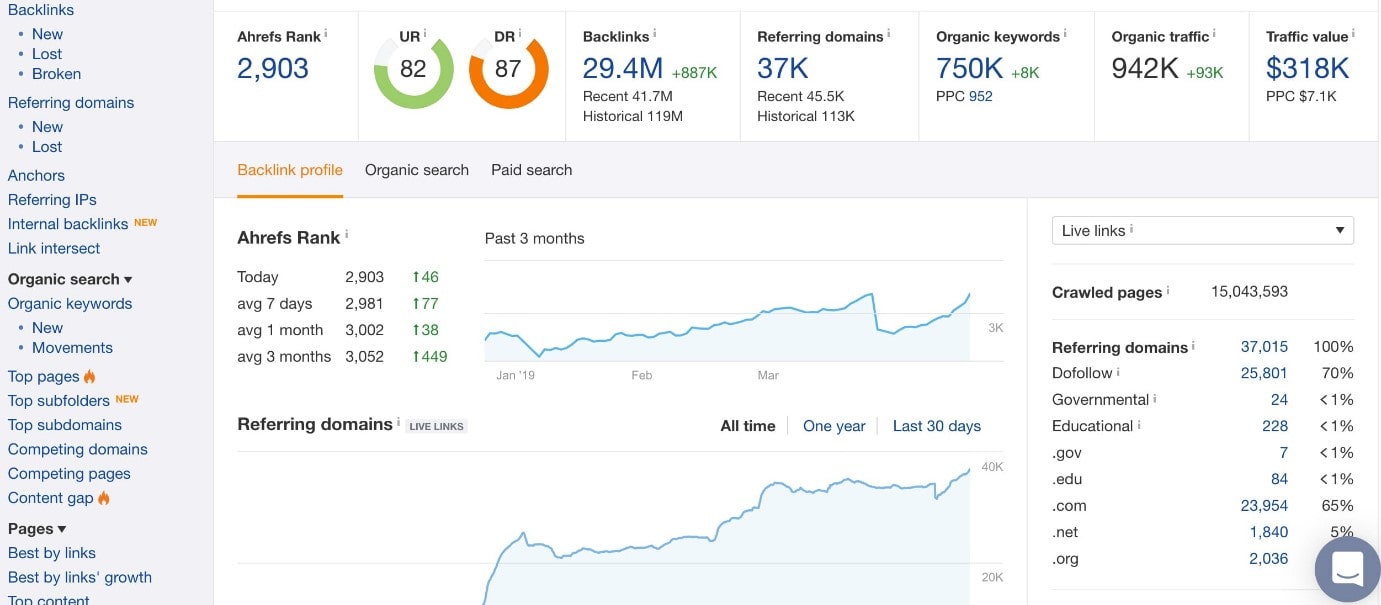
Navigating the sea of SEO demands vigilance over essential metrics. Each data point tells a narrative about your website’s performance, be it a family-owned bakery or a digital design agency. Here’s what to zero in on:
- Traffic Tidbits: Observe user flows and the most visited pages.
- Engagement Elements: Measure page views, bounce rates, and average session duration.
- Conversion Chronicles: Pinpoint actions users take, from signing up for a newsletter to finalizing a purchase.
- Organic Odyssey: Monitor the organic search traffic, indicating SEO health.
Harnessing these metrics offers clarity, guiding you to optimize every website corner and ensuring you stay on track in the bustling digital marketplace.
Organic Traffic Volume
In the bustling digital ecosystem, organic traffic stands out as a pivotal metric. It’s the purest indication of your website’s appeal in the vast digital landscape. For instance, consider a boutique coffee shop’s page. If their freshly-brewed blog content or aromatic bean descriptions pull in more visitors over time, that’s a win! Monitoring organic traffic offers keen insights:
- Growth Gauge: Track the uptick in visitors without spending on ads.
- Performance Pulse: Identify which content pieces or pages reel in the crowd.
- Referral Rundown: Pinpoint external sites driving folks to your domain.
- Market Momentum: Discover how your website stacks up against competitors.
Staying on top of this metric helps fine-tune your SEO strategies, ensuring your digital storefront thrives amid ever-evolving online trends.
Keyword Rankings
Keyword rankings stand tall as the heartbeat of any effective SEO strategy. Dive into a digital gardening blog, for instance. If their posts about “sustainable urban gardening” start ranking high, they’ve hit gold. The power of well-placed keywords cannot be understated. Tapping into this goldmine offers:
- Visibility Victory: High-ranking keywords push your page to the forefront.
- Engagement Engine: Relevant keywords draw in the right audience, sparking interaction.
- Conversion Catalyst: Prime keywords lead visitors down the sales funnel.
- Trend Tracker: Keeping an eye on keyword shifts helps you stay fresh in your niche.
By digging deep into keyword rankings, you position your website to rise and shine in search results. By optimizing, tracking, and tweaking, your site can resonate with audiences and search engines alike, driving transformative digital success.
Bounce Rate and User Engagement
Diving into the intricacies of website performance, bounce rate emerges as a litmus test for user experience. Consider an online boutique selling vintage watches. If visitors dip out after viewing a single product page, it’s a clear sign something’s off track. Balancing bounce rate with user engagement remains paramount. Here’s why:
- Feedback Funnel: A high bounce rate acts as an alarm, signaling necessary website revamps.
- Engagement Elevator: Sustained on-page interactions indicate captivating content.
- Conversion Connect: When users stay put, they’re more apt to make a purchase or sign up.
- Brand Boost: Low bounce rates coupled with high user engagement bolster brand credibility.
By zeroing in on these metrics and leveraging effective tracking tools, digital destinations can achieve a harmonious blend of attention-grabbing content and seamless navigation, setting the stage for SEO triumphs.
Conversion Rate from Organic Traffic
Peeling back the layers of organic traffic, one metric stands tall: conversion rate. It’s the silent testimony of a website’s efficacy. Imagine an artisanal coffee shop’s site, drawing in aficionados from across the state. The magic happens when those virtual visitors turn into actual customers. Why does this metric stand out?
- Pulse of the Page: High conversion rates scream top-tier user experience.
- SEO Synergy: Well-optimized content doesn’t just attract; it convinces.
- Tangible Triumph: Beyond clicks, conversions translate to business success.
- Adapt and Achieve: Monitoring this metric helps fine-tune strategies on-the-fly.
Harnessing the power of tracking tools, brands can tweak their online domains to not only pull in visitors but also persuade them. It’s the bridge between mere website traffic and business growth. And in the dynamic dance of digital marketing, that bridge is pure gold.
Page Speed and Performance
In the bustling digital marketplace, page speed doesn’t just set the pace – it sets the stage for every website’s performance. Take a gourmet food blog, for instance. Visitors won’t stick around to salivate over a slow-loading truffle risotto recipe. The stakes? Beyond bounce rates, it impacts brand reputation. Key insights to consider:
- First Impressions Count: A speedy site ensures visitors dig in, not dip out.
- SEO Sweet Spot: Swift load times give websites an edge in search rankings.
- Function Meets Form: It’s not just aesthetics; functionality plays its part.
- Real-time Responses: With adept tracking, you can spot and squash performance hitches promptly.
Every second shaved off a site’s load time amplifies user engagement. Brands that dial into this detail don’t just race ahead in the digital domain; they set the benchmark for excellence.
Backlink Profile and Domain Authority
Navigating the digital ocean, the robustness of a website’s backlink profile stands as its anchor, while domain authority acts as its compass. Imagine a niche travel blog charting unexplored destinations. Credible mentions from top travel sites amplify its authenticity. Diving deeper:
- Quality Over Quantity: A handful of authoritative links outperform a sea of weak ones.
- Spotlight on Relevance: Links from related niches, like adventure gear, can bolster your standing.
- Track to Triumph: Regularly monitor backlink health to sidestep any rogue waves.
- Boosting Domain Strength: Strategic SEO practices pave the way for increasing authority.
For brands riding the digital waves, a sturdy backlink profile paired with a high domain authority ensures they don’t just float but thrive amidst the online currents.
Tracking Local SEO
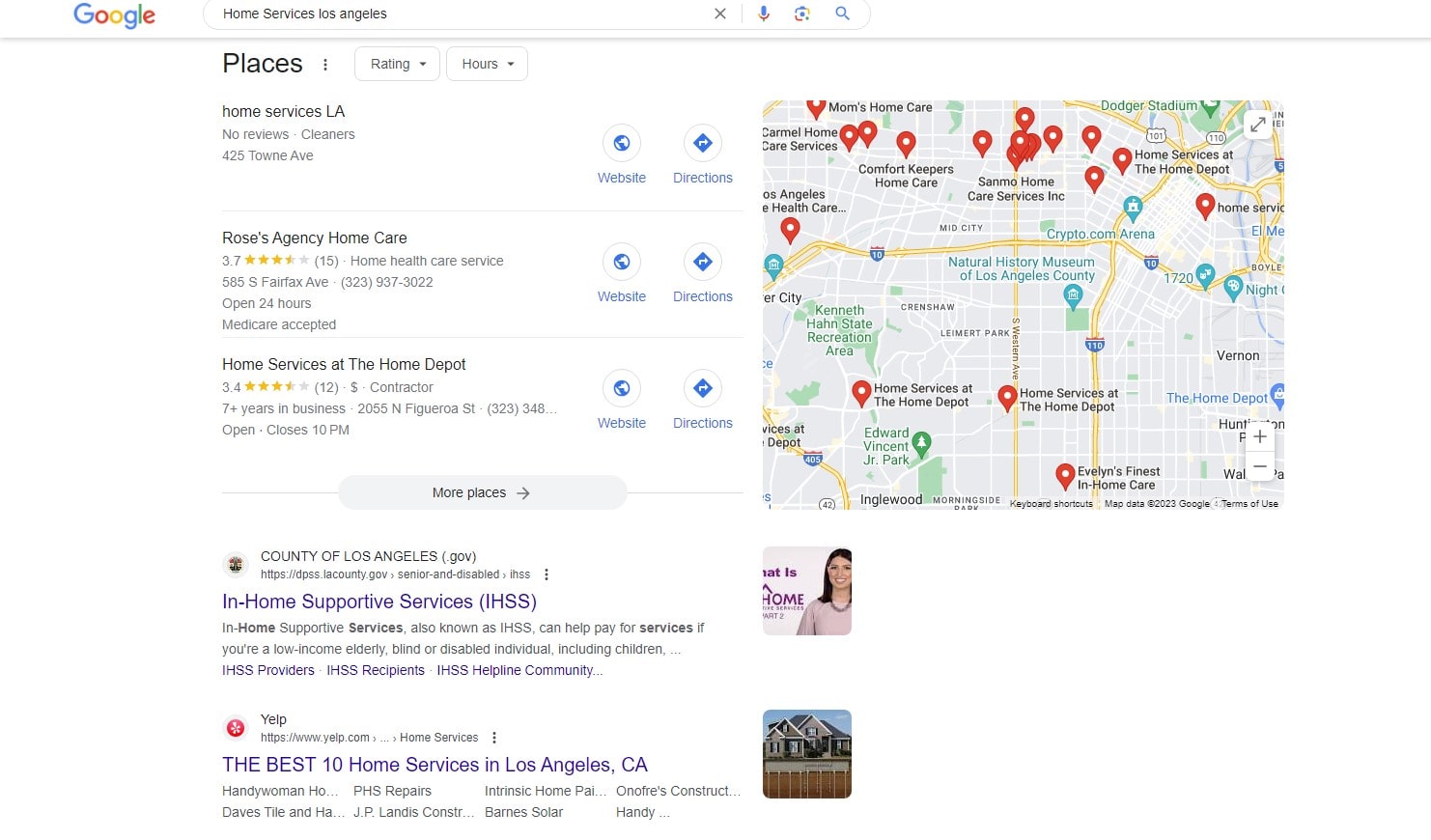
Diving into local SEO, businesses often aim to dominate neighborhood searches. Think of a cozy cafe in Brooklyn – its online footprint needs to shine brightly for nearby coffee enthusiasts. Key tracking strategies:
- Map Listings: Ensure your website emerges top-notch on map-based queries.
- Reviews Matter: Harness and analyze feedback from local patrons.
- Hyperlocal Keywords: Tap into vernacular phrases and community jargon for organic reach.
With a keen eye on these metrics, businesses can dance in step with local SEO rhythms, ensuring they’re the talk of the town. Get your page dialed in, and the neighborhood will undoubtedly rally behind your digital banner.
Importance of Local SEO for Businesses
Local SEO packs a punch for businesses eager to serve nearby communities. A bookstore in Chicago, for instance, wants literature lovers from adjacent streets to wander in. Effective SEO strategies ensure that this bookstore isn’t just another brick in the wall but a cornerstone for local readers. Elements to zero in on include:
- Localized Content: Craft pieces reflecting local events, issues, or stories.
- Accurate Listings: Ensure consistency across all digital profiles – from your website to third-party platforms.
- Engage Locally: Collaborate with nearby ventures or get involved in community activities.
By doubling down on local SEO, businesses can bridge the gap between the digital page and the physical store, turning online traffic into foot traffic, amplifying both visibility and viability.
Metrics for Local SEO: Local Pack Rankings and Reviews
For a bakery tucked away in Brooklyn or a car wash humming along Miami streets, local SEO metrics aren’t just numbers – they’re business lifelines. Leveraging these insights helps companies stand out, draw in community patrons, and outshine competitors on the same block. Here’s a snapshot of the metrics that matter:
- Local Pack Rankings: Hovering atop search results, the Local Pack showcases the top three businesses for your category. Slipping into this trifecta boosts website traffic and doors swinging open.
- Client Reviews: A stream of positive feedback propels businesses up search rankings. For instance, a Portland-based pizzeria raking in rave reviews gets nudged closer to that coveted Local Pack.
By harnessing page insights and tracking performance, local ventures can optimize their digital footprint and root their brands in community conversations – both online and offline. Making waves locally, after all, kick-starts ripple effects on broader horizons.
Mobile SEO Tracking
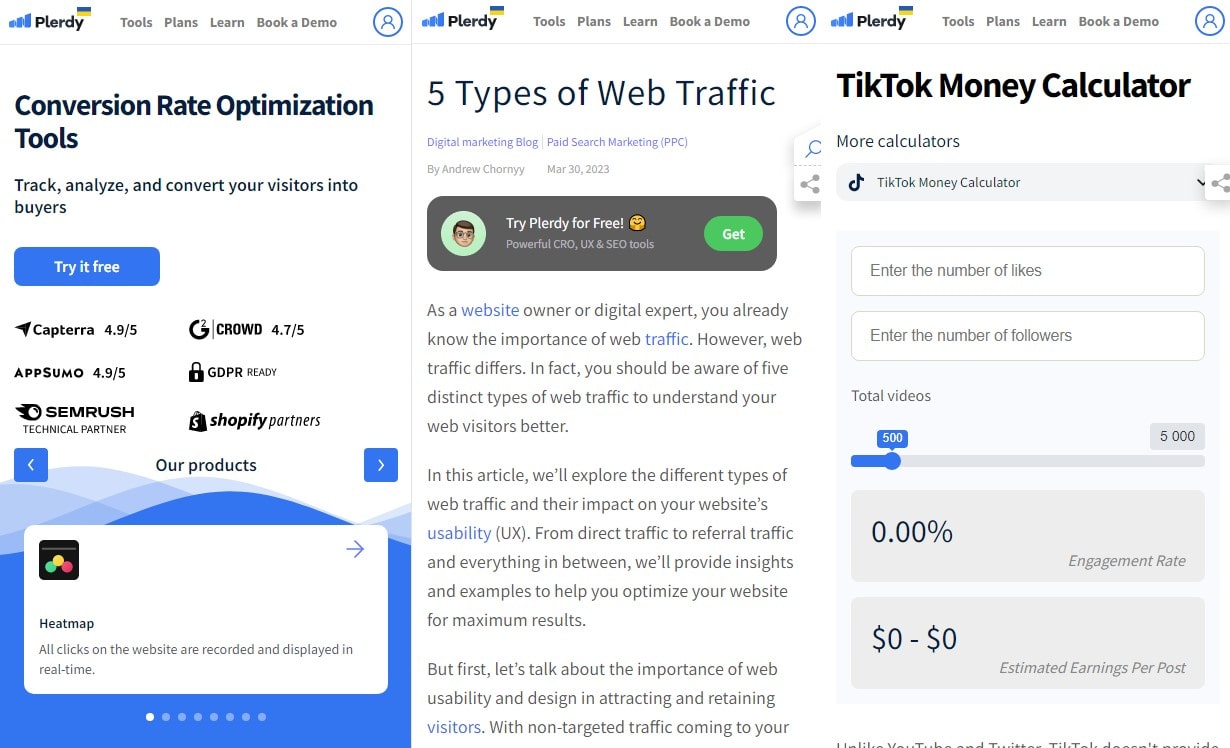
Mobile screens buzz with opportunities for businesses eager to capture the on-the-go audience. Mobile SEO isn’t merely about shrinking desktop content; it’s crafting experiences tailored for fingertips and swift scrolls. Dive into essential metrics to keep tabs on:
- Responsive Design Checks: Ensure your website adapts seamlessly across devices, making that Chicago cafe menu as readable on a phone as on a laptop.
- Load Time Snapshots: Slow mobile pages push potential clients to tap away. A San Diego surf shop’s site, for example, needs to load as quickly as waves crash.
By dialing in on tracking metrics specific to mobile, you can optimize pages to match user behavior, enhancing both user satisfaction and conversion rates. Every swipe and pinch matters; make sure your website is up to speed.
The Growing Importance of Mobile Search
As palm-sized screens dominate digital interactions, mobile search isn’t just an alternative — it’s a primary avenue for user engagement. Businesses can’t afford to let mobile opportunities slip through their fingers. From a Miami bakery leveraging geo-targeted ads to a Texas mechanic adjusting for voice searches, the terrain of mobile SEO is ever-evolving. Key elements to dial in on:
- Voice-Activated Searches: Siri and Google Assistant play pivotal roles in directing users, so tailoring content to fit voice queries is crucial.
- Geo-Specific Content: Mobile users often search on-the-move. Ensure your website serves local info when a user’s nearby — think pop-up events or flash sales.
- Accelerated Mobile Pages (AMP): These streamline the user experience, ensuring swift, responsive access.
By honing in on mobile search strategies, businesses can meet users right where they are — in the palm of their hand.
Metrics Unique to Mobile SEO
In the age where fingertips fly over touchscreens more than keyboards, understanding metrics specific to mobile SEO has become paramount. Diving deep into data can shed light on user behavior, allowing businesses from Seattle cafes to Nashville boutiques to refine their strategies. Key metrics to zero in on:
- Mobile Bounce Rate: Track how many users exit your page before engaging with its content. A high rate? It’s time to revamp your design.
- Click-to-Call Rate: Mobile users often reach out directly from search results. This tracking metric highlights the efficiency of your call-to-action buttons.
- Load Time: Speed matters on mobile. Tracking load times ensures your website remains agile and user-friendly.
- Viewport Time: The time users spend within the visible part of your mobile page before scrolling. It’s an insight into the effectiveness of your above-the-fold content.
Harnessing these metrics, businesses can refine their mobile experience, driving engagement and amplifying conversions.
Monitoring Algorithm Updates and their Impact
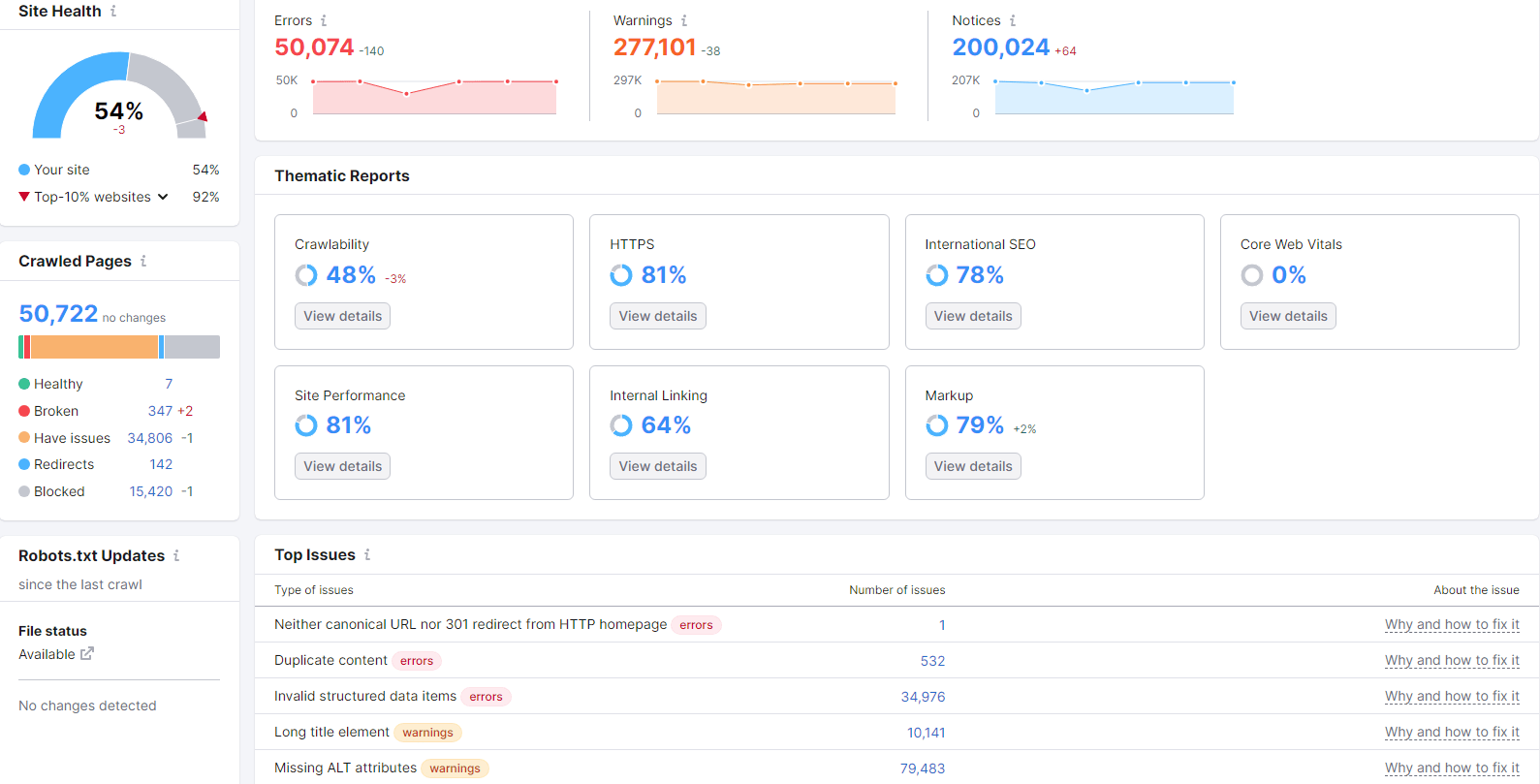
In the ever-evolving landscape of digital marketing, search engines continually refine algorithms, shaking up the strategies businesses from Texas wineries to Maine bookstores previously relied on. To keep a firm grip on online visibility, it’s crucial to:
- Stay Alert: Be in the loop with authoritative sources that break down algorithm shifts.
- Analyze Traffic: Dive into your website analytics. A sudden dip might signal a shake-up.
- Adjust Strategy: If your page falters post-update, tweak your approach to align with the updated algorithm.
- Engage in Communities: Participate in forums where SEO experts share insights, ensuring you’re not left in the dark.
By meticulously tracking these updates, businesses can pivot seamlessly, ensuring their website remains at the forefront of search results.
Staying Updated with SEO News
In the dynamic digital landscape, SEO professionals – from Vermont maple syrup producers to Alaskan fishing guides – understand the value of staying plugged into the latest trends and shifts. To ensure your website remains optimized and robust, it’s essential to:
- Dive Deep into Analytics: Regularly sift through page and website data, pinpointing any anomalies that might tie back to SEO shifts.
- Subscribe to Leaders: Lock onto top-tier SEO publications and podcasts. These platforms break down complex updates into actionable insights.
- Join Discussions: Engage in forums and online communities where SEO enthusiasts swap strategies and share fresh findings.
- Implement Regular Check-ins: Dedicate specific times to track changes, ensuring nothing slips through the cracks.
By consistently tapping into fresh insights, businesses can refine their strategies, adapting to the evolving demands of search engines, and ensuring a robust online presence.
Adapting Strategy After Major Algorithm Changes
Algorithm upheavals can turn the SEO strategies of a California winery or a Texas BBQ joint on its head. Swift, informed adjustments can mean the difference between sinking or swimming in search results. Navigate these turbulent waters by:
- Diving Straight into Data: Post-update, comb through your website analytics. Scrutinize page metrics for shifts in user behavior or engagement dips.
- Re-evaluating Content: Tweak and tune existing content, ensuring alignment with the altered algorithm demands.
- Feedback Loop: Foster a routine of tracking tweaks made and observing outcomes, refining strategies iteratively.
- Stay Connected: Tap into expert-led webinars and workshops that break down the implications of algorithm changes.
Embracing flexibility and adopting a proactive approach ensures businesses, irrespective of their niche, maintain solid footing even when search engines shake things up.
Conclusion about SEO Tracking
SEO tracking is the compass guiding digital navigators to the pinnacle of online success. Through the deep valleys and towering peaks of digital performance, tracking remains a steadfast ally. Whether you’re diving into the vast oceans of e-commerce or scaling the rocky terrains of blogging, SEO metrics offer you the map.
Some specifics to zero in on:
- Keyword Positions: Essential for identifying where you stand. An e-commerce platform, for instance, can see shifts in organic traffic by monitoring keyword performance.
- Backlink Collection: Companies thrive on strong partnerships. By collecting and analyzing backlinks, you’re able to uncover the networks bolstering your SEO.
- Performance Reports: Websites, like well-oiled machines, need consistent check-ups. Regular SEO audits reveal the health of your site, showing areas of excellence and those requiring a touch-up.
- Engagement Metrics: Metrics like CTR, session duration, and returning visitors are paramount. For a content-driven platform, these insights can be transformational.
As we wrap this guide, let’s not forget the powerful Plerdy tool—tailored for SEO & UX analysis, ensuring that your strategies aren’t just smart, but genius. Dive in today, immerse in the data, and steer your digital ship to success. 📈

